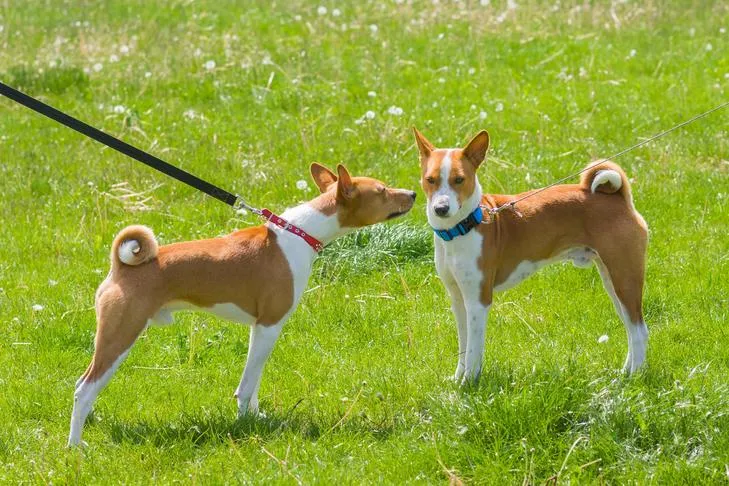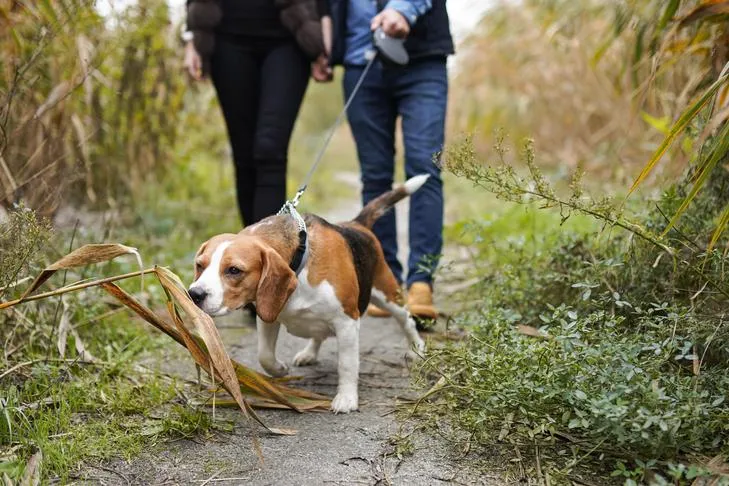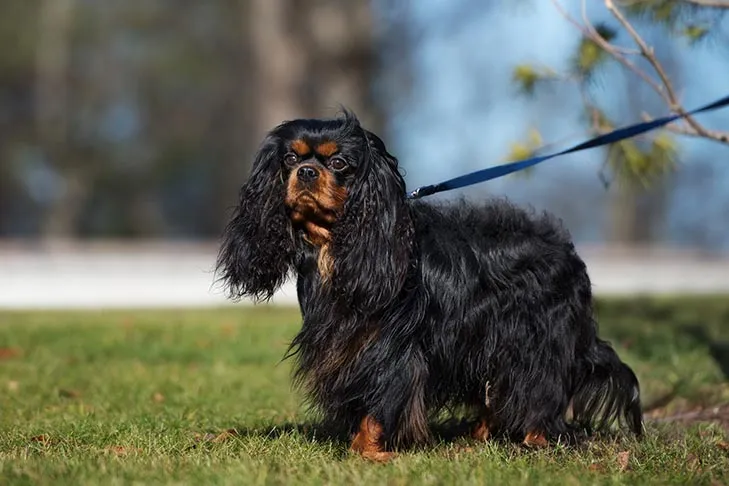There’s a universally cherished image for dog owners: a peaceful stroll with their beloved canine companion, walking calmly by their side. However, for many, this dream walk often devolves into a struggle, with their dog dragging them down the street, making every outing a chore rather than a pleasure. Leash pulling is a prevalent issue that can be frustrating, physically demanding, and even unsafe, risking injuries to both dog and handler. If you’ve been wondering How To Stop A Dog From Pulling On Its Leash, you’re not alone. This guide will provide practical, expert-backed strategies to transform your walks from a tug-of-war into an enjoyable, harmonious experience. Mastering loose-leash walking not only enhances safety and control but also strengthens the bond between you and your dog, making outdoor adventures truly rewarding. Whether you’re just starting out with a new puppy or looking to refine your adult dog’s manners, these proven methods will help you achieve polite leash behavior. Moreover, consistent training for polite leash walking can lay the groundwork for more advanced skills, such as training a puppy for advanced roles.
Understanding Why Dogs Pull on the Leash
Dogs naturally explore the world nose-first, driven by an innate curiosity about scents, sights, and sounds. For them, a walk is an exhilarating sensory experience, and they often want to get to the next exciting thing as quickly as possible. This natural enthusiasm, coupled with a lack of understanding of human walking etiquette, is the primary reason dogs pull. They learn that pulling often gets them closer to their desired destination or object of interest – whether it’s a tempting smell, another dog, or simply the park entrance. When a dog pulls and continues to move forward, they are inadvertently rewarded for that behavior. Breaking this learned habit requires consistent training, patience, and a shift in how both you and your dog approach walks.
Essential Techniques to Teach Loose Leash Walking
Achieving a relaxed, loose-leash walk with your dog is entirely possible with the right approach. Here are key techniques to implement:
1. Reinforce Good Leash Behavior (Positive Reinforcement)
Never underestimate the power of positive reinforcement. Dogs are more likely to repeat behaviors that earn them a reward. This applies not just to trick training but to every interaction, including walking politely on a leash. When your dog walks nicely by your side, with a slack leash, acknowledge and reward that behavior immediately.
Carry high-value treats on every walk, and be ready with enthusiastic praise or gentle pets. In the initial stages of training, reward heavily and frequently for even short bursts of polite walking. As your dog’s skills improve, you can gradually reduce the frequency of food rewards, replacing them with “life rewards” like the chance to sniff an interesting patch of grass or a controlled, polite greeting with another dog. The key is to make polite walking far more rewarding than pulling.
2. The “Stop-and-Go” Method: Never Reward Pulling
The most fundamental rule of stopping leash pulling is to never let your dog move forward when the leash is tight. Your dog’s primary motivation for pulling is to get somewhere. If pulling leads to forward movement, you’re inadvertently reinforcing the very behavior you want to eliminate.
As soon as you feel tension on the leash, stop immediately. Plant your feet firmly and become a “tree.” Do not move forward again until your dog either returns to your side or the leash goes slack. This might mean standing still for a few seconds or even a minute, especially at first. Your dog will eventually realize that pulling brings the walk to a halt. This consistent consequence teaches them that a tight leash means no progress, while a loose leash means they can continue their enjoyable walk.
 Two Basenjis meet outdoors, one on a leash, in a moment of calm interaction.
Two Basenjis meet outdoors, one on a leash, in a moment of calm interaction.
3. Wait for a Slack Leash Before You Walk
The counterpart to stopping when your dog pulls is knowing when to resume walking. The signal is a slack leash – it should hang in a ‘J’ shape, indicating no tension. Crucially, your dog should also re-engage with you, even if it’s just a glance back or a step closer.
In the beginning, this might feel painstakingly slow, with many stops and starts. Be patient. Your dog will eventually look back, wondering why you’ve stopped. At that precise moment, praise them, offer a treat right at your side (to reinforce their position), and then calmly resume walking. This sequence teaches them that a loose leash and their attention on you are the keys to keeping the walk going.
4. Integrate Life Rewards into Your Walks
Beyond formal treats, walks offer numerous “life rewards” that can be used to reinforce good behavior. These are everyday things your dog enjoys, such as sniffing a bush, greeting a friendly person, or exploring a new area. Instead of letting your dog randomly rush to these attractions, use them as rewards for polite walking.
For instance, if your dog walks with a loose leash for 10-15 feet, verbally praise them and then release them with a cue like “Go sniff!” to allow them a few minutes of controlled exploration. This turns desirable activities into privileges earned through good behavior, making the concept of polite walking even more appealing to your dog.
5. Walk at a Good Pace
Often, human walking paces are too slow for dogs. Even small breeds have a naturally quicker gait than many people. Dogs tend to pull because they want to move faster or maintain their natural stride. While the ultimate goal is for your dog to match your pace, during the initial training phase, try to maintain a brisker, more purposeful pace that is comfortable for both of you. A faster, more consistent pace can help keep your dog engaged and make it easier for them to understand and adopt a no-pulling habit.
6. Uphold Consistency in Your No-Pulling Rule
Consistency is the bedrock of successful dog training. If you sometimes allow your dog to pull (e.g., when you’re in a hurry, it’s raining, or you’re close to home), you inadvertently teach them that pulling sometimes works. This makes the behavior more resistant to extinction and sets your training back significantly.
Regardless of the weather, your schedule, or the destination, the no-pulling rule must be absolute. If you’re short on time, consider a quick potty break in the yard before embarking on a training walk where you can fully commit to the stop-and-go method. Every time you enforce the rule, you reinforce the lesson. This consistency is also crucial for house training your puppy effectively.
 A Beagle pulls on its leash to intently sniff the ground during an outdoor walk.
A Beagle pulls on its leash to intently sniff the ground during an outdoor walk.
7. Keep Training Sessions Short, Positive, and Fun
Leash training can be challenging, especially with a determined puller. It’s easy for both handler and dog to get frustrated. To maximize success, keep your training sessions brief and enjoyable. Aim for 5-10 minute sessions, several times a day, rather than one long, arduous session.
Puppies, in particular, have short attention spans. Pushing them too far will lead to frustration and diminish their willingness to learn. Focus on small victories – a few steps with a loose leash, a successful stop-and-go interaction. The goal isn’t to cover a certain distance initially; it’s to build positive associations with walking politely.
8. Be an Engaging Presence on Your Walks
The outdoor world is a constant barrage of fascinating stimuli for your dog. If you’re disengaged, perhaps on your phone or lost in thought, your dog has little reason to pay attention to you. To counteract external distractions, you need to be the most interesting thing on the walk.
Talk to your dog, offer unexpected praise, change direction suddenly, or initiate a quick game like “find it” with a treat. Keep your dog guessing and looking to you for direction and interaction. A dog that is engaged with you is less likely to be solely focused on pulling towards external stimuli.
9. Cultivate Calmness in Yourself and Your Dog
Dogs are incredibly adept at reading human emotions. Your mood can directly influence your dog’s behavior on the leash. If you’re anxious, frustrated, or overly excited, your dog will pick up on these cues, potentially intensifying their own emotions and making leash pulling worse.
Whether it’s an exciting encounter with a friend or a scary situation like a loud noise, strive to remain calm and composed. A calm handler communicates to the dog that there’s nothing to be overly excited or fearful about. The more relaxed your dog is, the more receptive they will be to listening to your commands and maintaining polite leash manners. Achieving a calm demeanor is often a foundation for teaching your dog to walk to heel. For more advanced guidance, explore how to teach your dog to walk to heel.
 A serene Cavalier King Charles Spaniel sits politely on a lead outdoors.
A serene Cavalier King Charles Spaniel sits politely on a lead outdoors.
10. Proactively Manage Distracting Situations
Distractions – other dogs, squirrels, unfamiliar people, new environments – are major triggers for leash pulling. Your dog might pull to investigate, to greet, or even to escape something they perceive as threatening. The key is to address these situations proactively, before your dog becomes overwhelmed and reactive.
When you anticipate a distraction, immediately engage your dog. Call their name, offer a high-value treat, ask for a simple obedience cue like “sit” or a “hand target.” You can also teach a “watch me” command to get your dog to make eye contact with you, diverting their attention away from the stimulus. By redirecting their focus onto you, you teach them that good things happen when they pay attention to you in the presence of distractions, rather than pulling towards them. This proactive engagement is also a critical component of specialized service dog training, where dogs must maintain focus in highly distracting environments.
Conclusion
Teaching your dog to walk politely on a leash requires patience, consistency, and understanding, but the rewards—enjoyable walks and a stronger bond with your companion—are immeasurable. By consistently reinforcing good behavior, implementing the “stop-and-go” method, integrating life rewards, and proactively managing distractions, you can transform your dog’s leash manners. Remember to keep training sessions positive, short, and fun, and always maintain a calm and engaging presence. With dedication, you’ll soon experience the joy of walking your dog without being pulled down the street. If you find yourself struggling or need personalized guidance, don’t hesitate to seek out professional canine behavior training for expert assistance.
